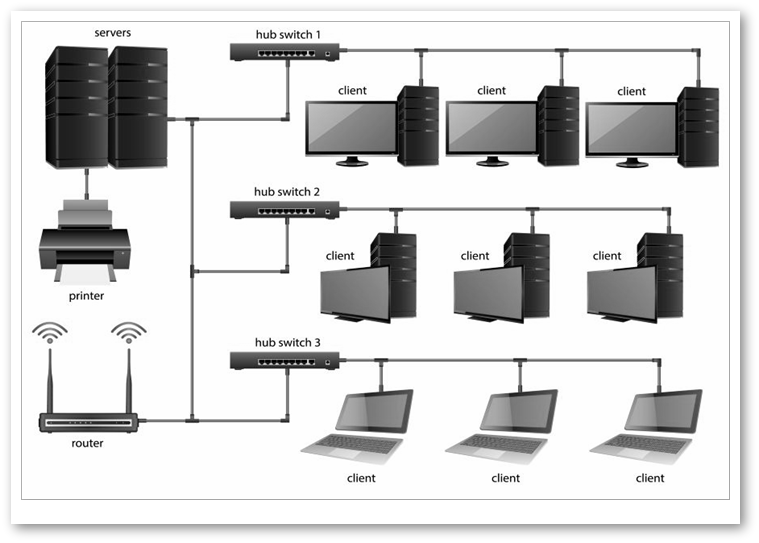
Copyright © Network Control Center · All Rights reserved · E-Mail: admin@ncc2017.org
4649 Tanglewood Road
Jackson, MS 39201
Tel: 1-662-902-5682
Jackson, MS 39201
Tel: 1-662-902-5682
Suite 101, 1220 West Market Street
Wilmington, Delaware U.S.A. 19901
Tel: 1-302-123-7777
Wilmington, Delaware U.S.A. 19901
Tel: 1-302-123-7777
Blog
Lorem ipsum dolor sit amet, consectetur adipiscing elit. Integer nec
odio. Praesent libero. Sed cursus ante dapibus diam. Sed nisi. Nulla
quis sem at nibh elementum imperdiet. Duis sagittis ipsum. Praesent
mauris. Fusce nec tellus sed augue semper porta. Mauris massa.
Vestibulum lacinia arcu eget nulla.




How to secure your Wi-Fi network
Ideally, your wireless router will do its job perfectly 24 hours per day, seven days a week, offering your Internet-based
devices full connectivity and keeping the bad guys at bay.
That's only the ideal scenario, though. Hackers or freeloaders could sit in a car outside your home, and get access to your
data as you read this article!
So, what can you do to prevent these things from happening? Well, read this article carefully, and then apply all the things
you're going to learn from it right away. By doing this, you will be ahead of most people when it comes to Wi-Fi network
security - it's a promise!
Everything begins with your router. It can be a strong device, which is able to fight villains successfully, or the weakest link,
which facilitates their break-in into your systems.


Suite 101, 1220 West Market Street
Wilmington, Delaware U.S.A. 19901
Tel: 1-302-123-7777
Wilmington, Delaware U.S.A. 19901
Tel: 1-302-123-7777


Start by limiting the Wi-Fi broadcast power. This won't necessarily stop people from trying to connect to your network, but it
will make their job harder. The good news is that there are many rp-sma adapters and cables that can be used to extend the
router range in a particular area, if you need that.
If your router has this Wi-Fi power control feature, you will only have to flip a tiny switch that's usually located on the back
panel. That's pretty much all you can do without logging into the router.
OK, so now it's time to log into your router and change the admin user name and password. I know, you may have changed
them a few months ago, but trust me: you need to do it again.
If your router doesn't allow you to change the admin user name, dump it. Yes, get rid of it right away! Hackers have an
extensive list of default user names and passwords for each router model, and you don't want to make their lives easier by
getting half of their work done - that is, providing the correct user name.
Then, it's time to choose a real password. No, jimmy36wins doesn't qualify as a strong password, because hackers also have
huge dictionaries of words, and they have learned to use them properly. In fact, a password like that could be easily broken
within minutes!
How does a strong password look like, then? Here's the method we are using at NCC to generate completely random, highly
effective passwords.
We start pushing the keyboard keys randomly with our left thumbs, while holding down the shift key (using the right thumb)
every now and then. Here's how a potential router password set by us may look like:
R4@6Cg<[}*-JKj>/Sx#%4*Y^S7J9sH
Yes, I know it's an ugly password. But this is exactly what makes it perfect! Most hackers would need years to crack a
password like that.
So, create your ugly password and use it for your router. Don't be scared by the fact that you won't be able to remember it.
You are only going to use it once or twice per year at most, so you can safely write it down, put the paper somewhere safe,
and then forget about it.
While you are still inside the router admin area, be sure to change the network name, also known as SSID. It's the name that
people are using to connect to a particular network. To give you an example, Netgear, a network equipment manufacturer,
names its networks NetgearXYZ, with XYZ being a set of numbers.
So, why not make it harder for the hackers by changing your "Netgear" Wi-Fi network name to "Linksys", for example?
Today's Wi-Fi networks are only secure if they use the WPA2 encryption protocol, with the encryption type set to AES. Yes,
you will have to create another ugly password, which will be used to encrypt Wi-Fi data.
I know it's tempting to reuse the router admin password here, but don't ever make this huge mistake! Yes, I know that you
will need to use this password every few months or so, but it's best to write it down and use it whenever you needed.
If you've got a modern router, it includes a hardware-based firewall, which should protect you from most attacks. Be sure to
activate it!
Then, turn off any guest networks. If you've got visitors who want to use your network to access the Internet, go ahead and
create a guest network, but only activate it when it is needed. In fact, some smart router manufacturers such as Asus have
made it even easier on your end, adding the options of creating guest networks that are only valid for a couple of hours.
Disable WPS, aka Wi-Fi Protected Setup. It's a feature that makes connecting new devices to your network a breeze, but it
also introduces significant security risks. It's best to forget about it.
But don't forget to check for router firmware updates each month (or so). New fixes usually help boost Internet transfer speed
and patch any security problems that may have been discovered.
